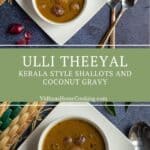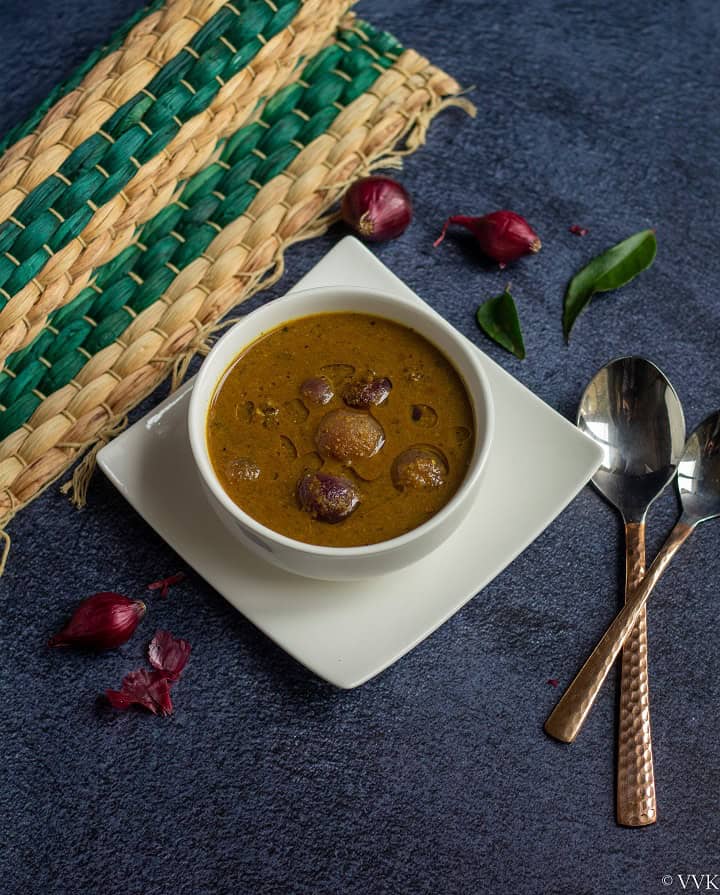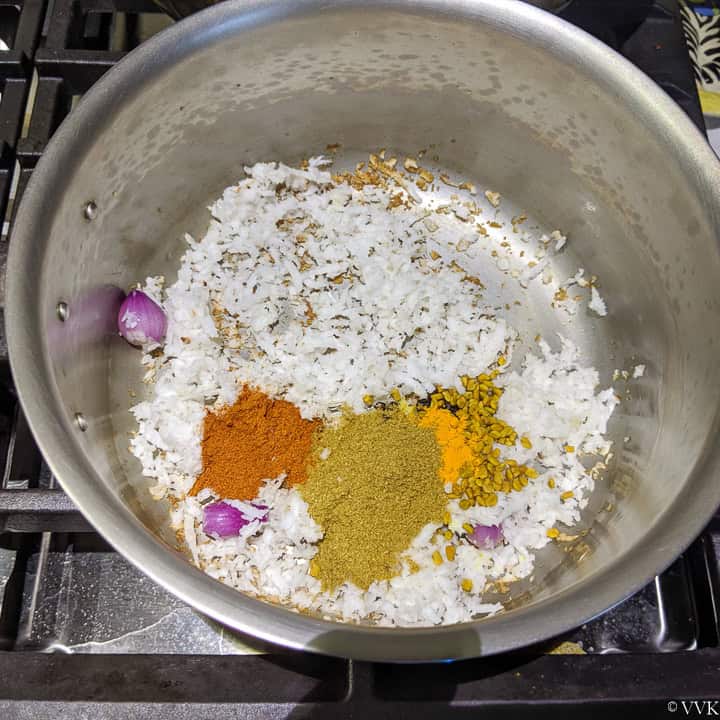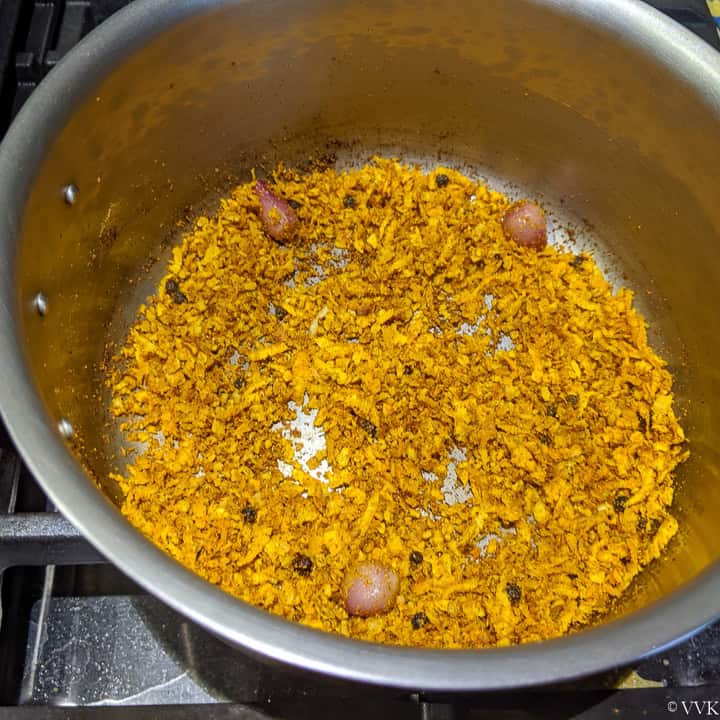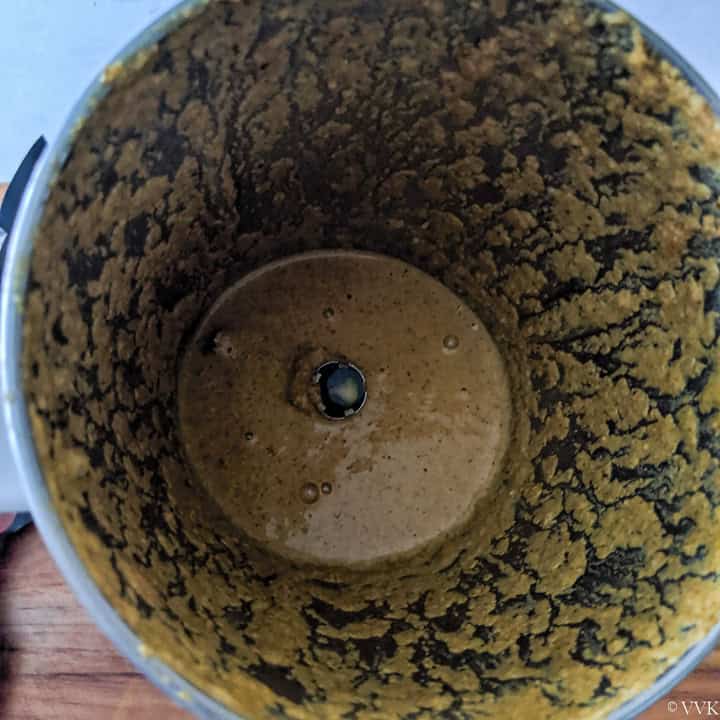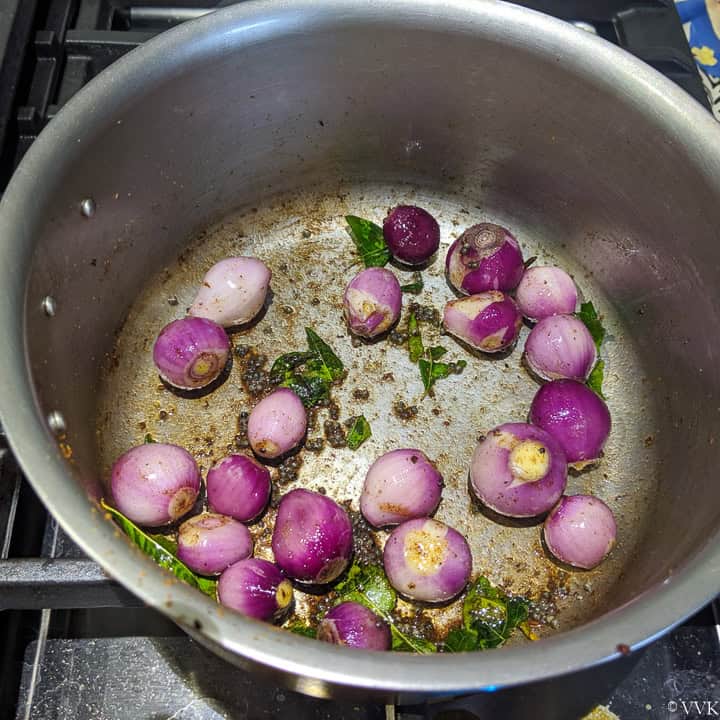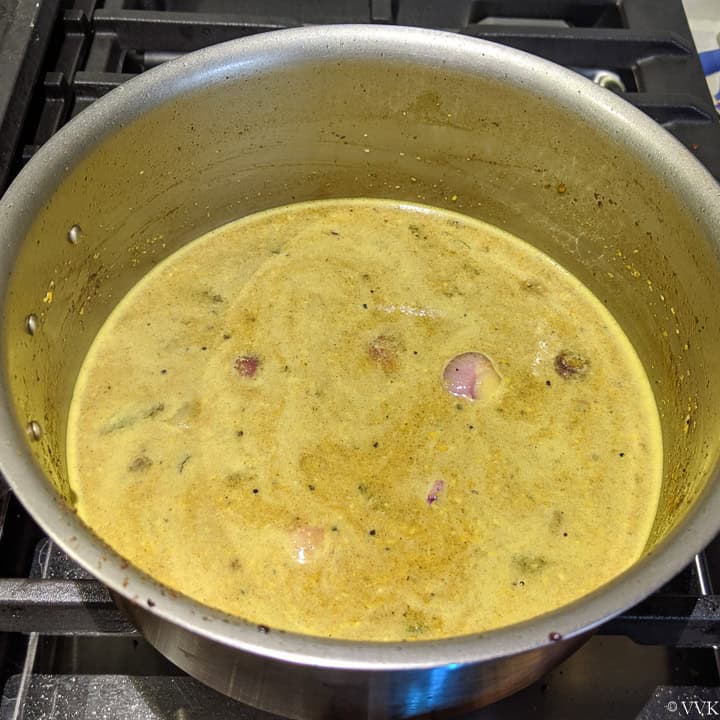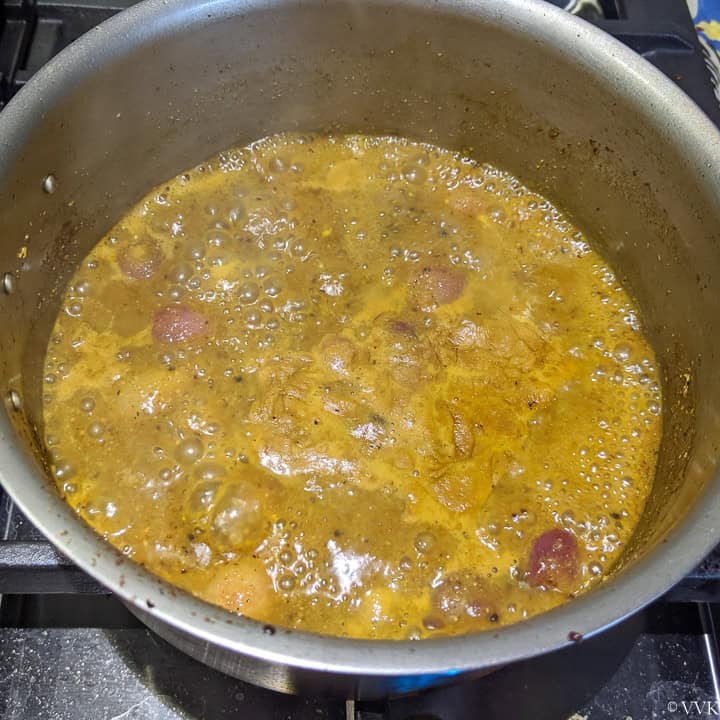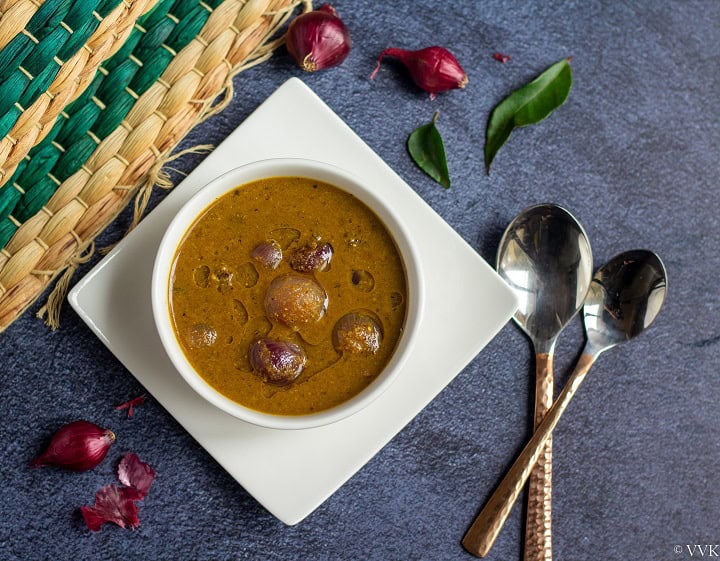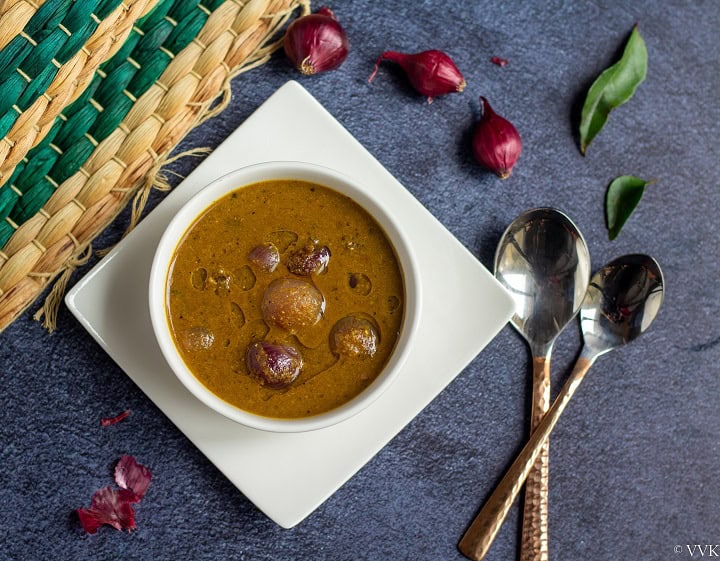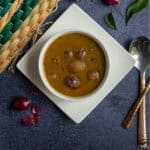Ulli means shallots in Malayalam, and theeyal means “burnt dish.” (source – Wikipedia) We roast the coconut and spices until its dark and brown hence the name burnt dish. In some parts of Kerala, this theeyal features on the sadya/feast menu also. When I make my elaborate sadya thali, I always include this theeyal. I love to make theeyal and avial for the sadya. :-) It’s one of our family’s favorites, and I make it regularly for our everyday meal. It is more like Tamilnadu style kuzhambu, especially more like the arachuvitta vathal kuzhambu.
Our everyday meal plate-
I have explained how our typical everyday meal plate is in previous posts, but let me share it again. If you are following me on Instagram, you would have known by now. Rice is our staple, but we also like quinoa, steel-cut oats, and millets. I usually serve rice either with,
sambar / lentil-based tamarind stew or kuzhambu / spicy tamarind stew or curry or rasam / tangy broth with or without lentils or chutneys
We mix the rice or the grain with any of the above and relish it along with a dry curry more like a stir-fry called poriyal or gravy curry called kootu. I always look out for different curries and gravies to pair with rice and learned about this theeyal in that quest. I got this recipe from our friend, but when I saw the recipe video at the Kerala Tourism channel, I modified it and made it super simple.
Easy shallots theeyal recipe-
All you need to is dry roast coconut, fenugreek seeds, red chili powder, coriander powder, turmeric, black pepper, and few shallots. Then grind this into a smooth paste, and this forms the base of the theeyal. Then you saute some more shallots and add some tamarind water, followed by the prepared paste and simmer. Once you have the shallots peeled, you can make this theeyal in no time. While you can add other veggies like brinjal or drumstick, we like our theeyal just with shallots.
Why spice powders instead of whole spices?
You might be wondering why I am using coriander powder and red chili powder instead of whole spices. Actually, during one onam, I didn’t have sufficient coriander seeds. (Blame my planning skills) But I had coriander powder, and that’s when I stumbled upon the theeyal recipe with spice powders instead of whole spices. It worked perfectly well, so that became the new norm. Please check the recipe notes for the whole spices measure. Now let me share how to make this theeyal with detailed step-wise pictures-
Ulli theeyal with step-wise pictures-
Heat a saucepan or kadai and add 1 tsp of coconut oil. When the oil is hot, add the coconut first and fry for a minute or two. Then add all the spice powders – coriander powder, red chili powder, turmeric powder, three shallots, fenugreek seeds, and whole pepper.
Now roast till the raw smell goes for about 4 to 5 minutes over medium heat. The coconut mixture will turn brown, and that’s perfectly fine. Remember, theeyal means “burnt dish.” We need to roast the coconut well. Don’t let it turn dark brown, though.
Let this mixture cool down and grind with ½ cup of water into a smooth paste. Set this aside.
Now heat the same saucepan or kadai and add the remaining 2 tsps of oil. When the oil is hot, add the mustard seeds, asafoetida, curry leaves. Let the mustard seeds splutter. At this stage, add the shallots and saute for a few minutes (three to four minutes).
Now add the tamarind water and salt and let it simmer for a few minutes. Let the shallots become tender. Now add the ground paste and bring it to a boil.
When it comes to a rolling boil, turn off the heat. Add a few more curry leaves and drizzle a tsp of coconut oil. (It’s optional).
Serve the theeyal with rice. I have tried theeyal with tiffins like idli, upma, and dosa also.
Recipe Notes-
For this measure, you can use 2 to 3 dried red chilies and 4 tsps of coriander seeds, instead of the spice powders. Just roast them along with coconut and grind it. Make sure you are not letting the spices turn black. If needed, roast the coconut and spices separately. As always, adjust the spices and salt as per your preference. I have tried making this theeyal with and without chopping the shallots. You can cut them into half as well. Along with shallots, you can add veggies like brinjal, drumstick, or even mixed vegetables. Adjust the gravy consistency according to your preference. If you feel the theeyal is thin in consistency, add 1 tsp of rice flour 2 to 3 tbsps of water and add it to the theeyal. Let it simmer for 3 to 4 minutes and turn off the heat. The rice flour slurry helps to thicken the theeyal. Coconut oil is preferred, but you can use other oil as well.
Other Onam Recipes-
Beetroot khichadi Puliserry Chakka pradhaman Kerala style rasam Eriserry
PS: Follow me on Instagram or join my Facebook Group for more gardening and recipe updates. If you try this ulli theeyal, please don’t forget to comment and rate this recipe. If you have any questions, please leave a comment, and I will get to it asap. Make sure to follow me on my Pinterest for more healthy and delicious ideas!
📖 Recipe
Update Notes: This recipe was originally posted in 2015 but now updated with new pics, and recipe cards.
